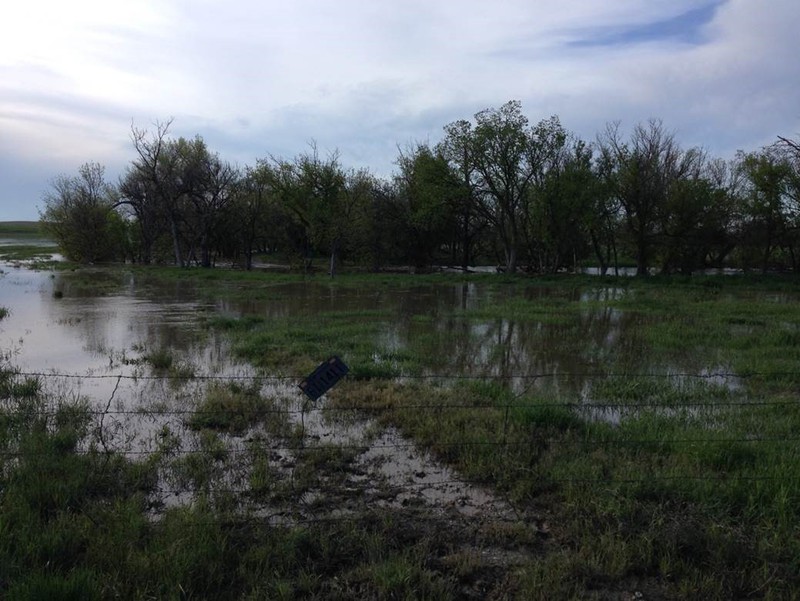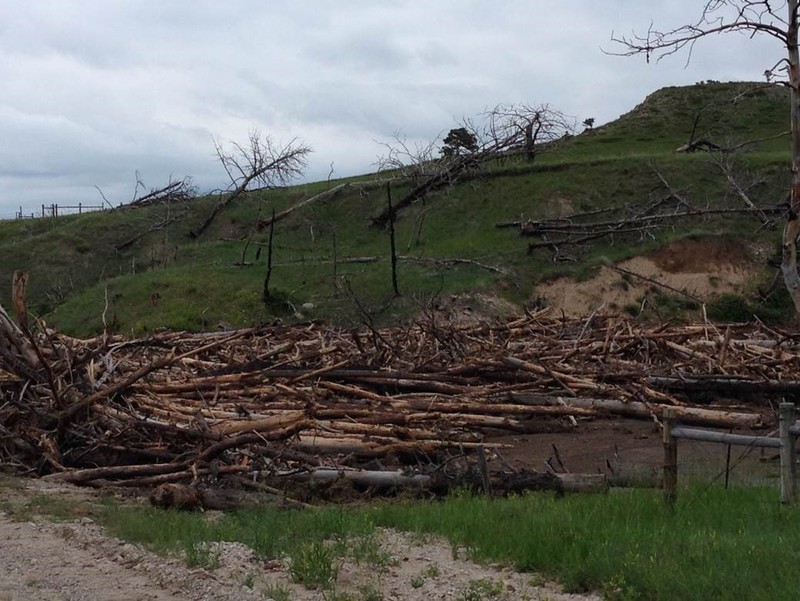CSC course to examine how water moves on rangeland

CHADRON – It’s not easy to think of drought at a time when streams and rivers all around you are at or near flood stage, and every thunderstorm brings a threat of flash floods.
But planning for a class called Rangeland Hydrology, to be offered at Chadron State College next spring, has to include how landscapes respond to the more typical weather patterns of the high plains region, as well as the way water flows though the ecosystem in wet years like this one, according to Tony Perlinski, assistant professor of applied sciences.
“One of the key components of healthy rangeland is how it captures water,” Perlinski said. “In the U.S. most of our rangelands are in the arid western part of the country. With this course we will look at how changes in the management of rangeland will impact the movement of water.”
Although the flooding and high water flows that the region experienced following the Mother’s Day blizzard in 2015 that dumped 18 inches or more of wet, heavy snow on the ground are out of the ordinary, this year’s conditions will still provide good material for the course, Perlinski said.
“We are looking at how water moves through the system, the hydrologic process, everything from precipitation, that we have seen lots of this year, to how it enters the soil, moves through the soil and how it manifests itself downstream,” he said.
In a typical year, northwest Nebraska averages 14 to 15 inches of precipitation and much of that comes as snow, Perlinski said. As much as 80 percent of that moisture is lost to evaporation, creating conditions that allow the remainder to slowly infiltrate the soil, where it can nourish plants, is critical to rangeland health, he said.
This year, the heavy Mother’s Day snowfall, followed quickly by warm temperatures, compacted and saturated the ground, which changed how the water moved.
“As we increase water in the soil, our infiltration rates get lower and lower, so rainfall moved quickly as runoff into the low-lying areas along creeks and rivers. With the soil in those sponge-like riparian zones already full of water, even small showers quickly caused a measurable increase in stream water flow,” he said.
Comparisons of rainfall and stream flow, available as graphs on the United States Geological Service website, display the effect vividly.
“We got four-tenths of an inch of rain and all of a sudden you see that spike (in stream flow),” said Perlinski as he compared charts from early June of local precipitation amounts and flow rates in the White River. “Normally the White River doesn’t respond so quickly.”
The effect was compounded on Sowbelly Creek in a rugged and remote section of Sioux County, when an unusually strong June thunderstorm dropped a barrage of rain in a short time.
“They had four inches of rain in an hour. It was probably a 100-year rainfall event,” Perlinski said. “You get a 100-year precipitation event and dump a lot of water in there, there’s no place for it to go and it comes as surface water.”
The resulting flash flood uprooted standing dead trees from a 2012 fire and rolled them into huge piles in the creek bed, destroying portions of Sowbelly Canyon Road.
Perlinski said he will incorporate this year’s wet conditions into the hydrology course next spring, but will also talk about the region’s more typical climate.
“It’s hard to talk about in a year like this, but 30 to 40 percent of the time we’re in a drought year anyway, and if not we are either coming out of drought or getting ready to go into one,” he said.
Low precipitation poses a challenge for rangeland management, which will be the focus of the later part of the class.
“So we think we have a limited water resource and how are we going to capture that limited amount of water and keep it in the soil,” Perlinski said. “Soil runoff isn’t a big problem most years, so we want to get it (moisture) sucked into the soil, and we want it to stay.”
Keeping vegetation on the land is one means of reducing the loss of soil moisture, Perlinski said.
Grazing practices and stocking numbers also have an effect and the class will study how changing management practices affects water flow across the landscape.
It’s a topic that has practical applications for landowners, who must make management decisions based in part on what others do, said Perlinski.
“If your neighbor upstream has good, healthy managed rangeland and you are relying on surface flow, his good management is going to hurt you,” he said. “If I’m not going to get that water from upstream because it’s staying in his soil, I have to better capture that little bit of rain.”
However, things are different in a season like this one, Perlinski said.
“This year is absolutely an anomaly. When you get 18 inches of snow in May, you are going to start high,” he said.
—George Ledbetter
Category: Campus News


